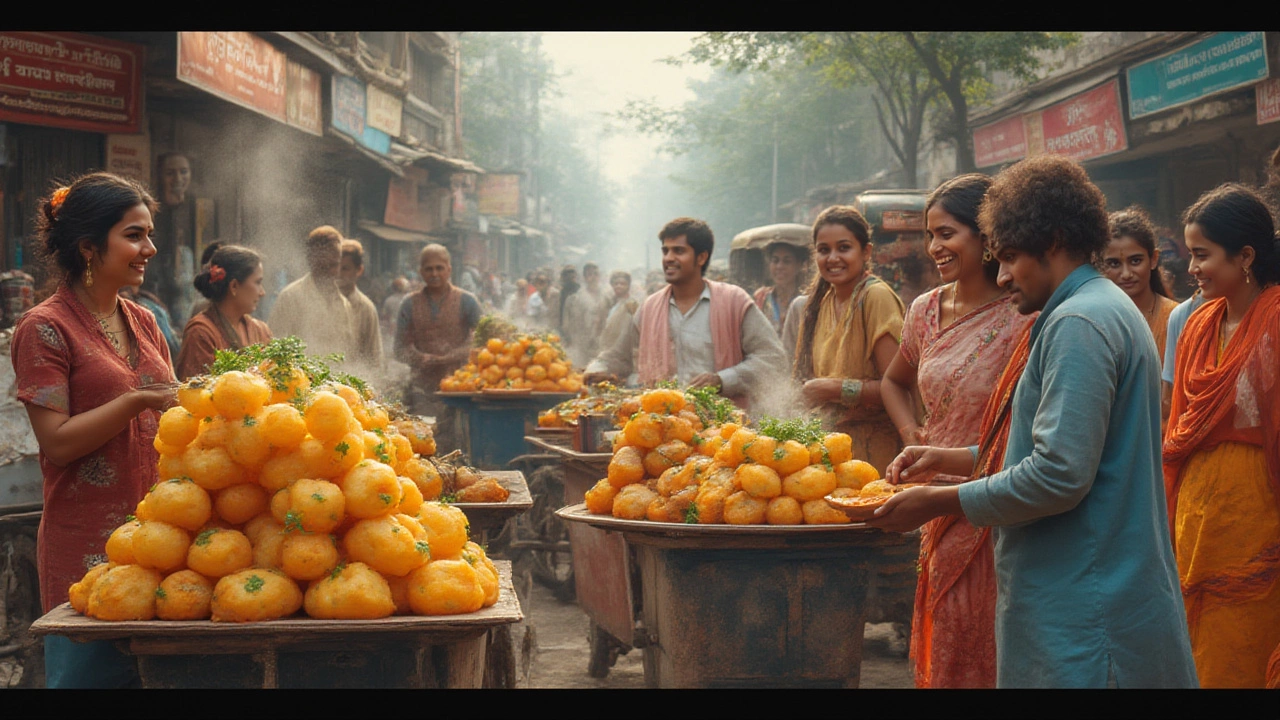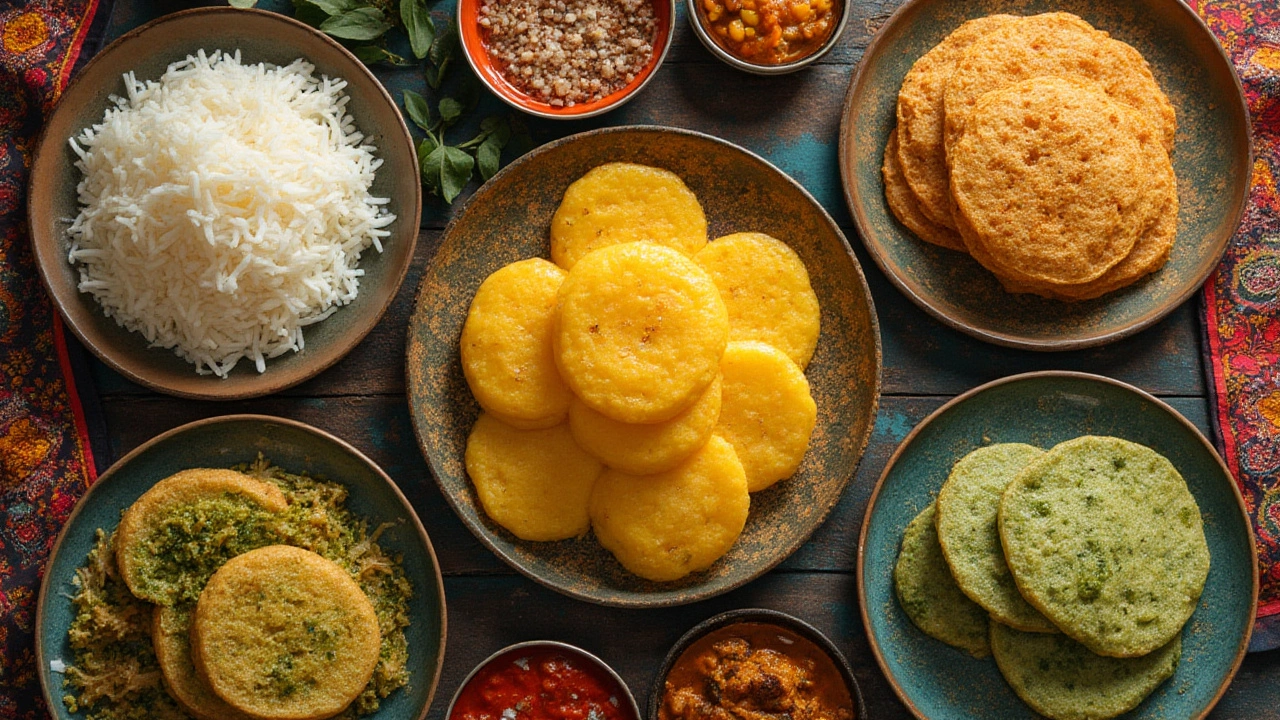There’s something about biting into a piece of warm, spongy dhokla that just feels like a homecoming, even if you’ve never set foot in Gujarat. Ask any Gujarati what food sums up their identity, and most likely, they’ll tell you it’s dhokla. The joke goes, if you check a Gujarati’s suitcase after a trip back home, you’ll find more dhokla than clothes—because it travels just as well as the stories about it. But what’s so special about this humble snack, and why is it crowned as Gujarat’s national food? Grab a cup of chai and let’s get into the heart (and stomach) of Gujarat.
What Makes Dhokla the National Food of Gujarat?
In Gujarat, food isn’t just about eating; it’s about community and ritual. Dhokla sits right at the center of that universe. It’s the dish you spot at breakfast, the go-to snack at family gatherings, and your best friend when late-night cravings hit. But the real genius of dhokla? It fits in everywhere—weddings, festivals, train journeys, and even a regular Wednesday lunchbox.
The origins of dhokla go further back than you might guess. Historians trace its earliest mentions to texts from the 10th and 11th centuries, placing this steamed dish smack in the middle of Gujarat’s culinary roots. The secret lies in its simple ingredients—fermented rice and chickpea flour batter, a pinch of turmeric, a splash of yogurt, and baking soda to get that signature rise. But it’s the process, passed down through generations, that makes each bite a memory and each recipe a personal legacy.
Another reason you’ll find dhokla everywhere in Gujarat is its flexibility. Rainy day? Dhokla with hot chai. Guests over? Dhokla with tangy mint chutney. Rushed morning? Grab a piece on the go. And if you think every piece of dhokla tastes the same, you haven’t tried ones from different regions. Each town, even each household, swears their dhokla is the “real” one. From the iconic yellow khaman in Surat to paler, firmer varieties near Vadodara, the diversity is endless.
It’s more than just love for a snack. It’s practicality, too. Dhokla is light, easy to digest, and, if you’re watching calories, pretty healthy compared to most fried Indian snacks. It stays soft for hours, making it easy to pack for journeys or to gift loved ones living far from home. No fancy equipment needed—just a simple steamer and some patience. That’s why, from posh hotels to tiny roadside stalls, dhokla rules the menu in Gujarat. If you’re ever lost and hungry in the state, remember: follow the smell of steamed chickpea flour, and you’ll never be disappointed.
The Secret Science Behind Dhokla’s Fluff and Flavor
Dhokla isn’t just food; it’s a little chemistry experiment on your plate. Next time you taste its spongy texture, thank the process called fermentation. Fermenting the batter overnight gives it a dose of natural probiotics and breaks down the proteins in the besan (chickpea flour), making it easy on the stomach. Baking soda or Eno Fruit Salt (ask any Gujarati—it’s a household staple) gives it that quick lift in the steamer.
Let’s talk turmeric—not only does it make dhokla pop with that sunny yellow color, but it brings all those anti-inflammatory, digestion-friendly benefits that Ayurveda swears by. Then there’s the tempering. Every dhokla, no matter what kind, gets a generous “tadka” of mustard seeds, fresh curry leaves, green chilies, and a spoonful of sesame seeds. The sound when that hits hot oil is basically the Gujarati dinner bell.
You’ll never find dhokla served dry. After steaming, people love pouring a thin, warm syrup over it—made from water, sugar, and a hint of lemon. This isn’t about making it sweet, but keeping it moist and giving it that faint tang. The result? Each bite is springy, fragrant, and perfectly balanced between sweet and sour. Dhokla may seem like one thing, but every family’s recipe is slightly different, and the rituals behind it connect generations.
Regional takes bring their own magic. Ahmedabad prefers super-soft, nearly creamy dhokla, while Rajkot folk like it cut thick. Some add ginger or crushed green chilies right into the batter, some don’t. Purists argue whether using Eno instead of classic baking soda is “cheating” or just modern convenience. The steamer itself, called “dhokla patla,” is as much a part of tradition as the dish inside.
Tips for perfect dhokla at home? Ferment the batter well—it should smell just a bit sour. Always whip it again before steaming, and never over-mix after adding soda. Steam on a medium flame, and don’t peek before the end. Trust the science, but also trust grandma’s advice—she’s probably seen more batches of dhokla than any scientist.

How Dhokla Became a Cultural Symbol
Dhokla is not just about taste—it’s Gujarat’s ambassador. Across India, bring out a tray of dhokla, and people instantly think “Gujarati.” While India has thousands of snacks, few have the kind of cultural identity dhokla commands. Festivals like Uttarayan and Navratri always have platters of dhokla ready for hungry friends and family, dressed up with coconut shavings or fresh coriander.
It’s even made its way to pop culture. Bollywood movies and TV shows often poke gentle fun at how Gujaratis take their dhokla everywhere—like my cousin taking a tiffin stacked sky-high during our Goa trip. Embassies overseas often include dhokla in Indian food fests, and it’s a crowd-pleaser at international potlucks because it’s gluten-free, vegan if you skip yogurt, and suits almost any palate.
Dhokla even shows up in unexpected places. It’s a favorite snack during long train rides, bundled tightly in banana leaves by mothers sending their kids off to college. It shows up at workplaces alongside spicy green chutney and a cup of masala chai as the perfect 4pm pick-me-up. My friend’s mom once packed 32 pieces in her son’s suitcase when he left for Australia—they survived the journey, and his homesickness barely did. Even airports in Gujarat sell fresh dhokla by the kilo, just so visitors can relive their snack moment on the flight home.
The all-around accessibility of dhokla makes it uniquely egalitarian. Rich or poor, young or old, vegetarian or not, everybody agrees: dhokla is for sharing. The care that goes into cutting each piece the same size, arranging them neatly, and pouring that fragrant tempering on top? That’s not just presentation—it’s ritual, and it’s about making home feel closer, even if you’re a thousand miles away.
Other Iconic Gujarati Delicacies You Shouldn’t Miss
If you think Gujarat is only about dhokla, you’ve only scratched the surface. The state is like a nonstop food carnival, with each city bringing its signature twist. For starters, there’s thepla—soft, spiced flatbreads that taste even better after a day in your lunchbox. Fafda and jalebi make the crunchiest breakfast pair. Then there’s handvo—a spiced, baked cake with crunchy veggies and sesame seeds that could give any brunch casserole a run for its money. Try undhiyu, the winter vegetable mix baked underground in earthen pots, or khakhra, the crispy cracker that never goes stale.
But dhokla stands apart, partly because it’s both everyday food and party food. It’s light, it’s cheerful, and you don’t have to be an expert in the kitchen to get it right—unlike, say, undhiyu, which is famously complicated. Dhokla travels well, too, which is a must for every true-blue Gujarati who finds themselves living outside the state.
If you decide to dive in deeper, try these tips: In big Gujarati homes, you’ll often see weekend brunches turn into tasting parties, with five or six types of snacks—including multiple types of dhokla laid out on one plate. Camp out at a local roadside stall or a railway platform in Gujarat, and you’ll discover more varieties of dhokla than you thought possible—nylon, rava, sandwich, spinach-infused, even chocolate versions that the new-age chefs have cooked up. Each one is a flavor bomb on its own.

How to Make Classic Dhokla at Home
You don’t have to book a one-way ticket to Ahmedabad to enjoy real Gujarati dhokla. The dish is famously forgiving, and you probably have the ingredients in your kitchen already. Here’s a basic step-by-step guide, with some seasoned tips:
- Start with 1 cup of chickpea flour (besan).
- Add 1/2 cup plain yogurt, a pinch of turmeric, 1/2 teaspoon salt, and a bit of ginger-green chili paste.
- Whisk in about 3/4 cup water to make a smooth, lump-free batter. Let this ferment for at least 4-6 hours, or overnight if you want the real tangy kick.
- Just before steaming, add 1 teaspoon Eno or baking soda. Mix gently but rapidly—the batter should puff up.
- Pour into a greased steaming dish. Steam for 15-20 minutes. Do not open the lid early—steam magic at work!
- Prepare tempering: Heat 2 tablespoons oil, pop 1/2 teaspoon mustard seeds, add 7-8 curry leaves, 2 chopped green chilies, and 1 teaspoon sesame seeds.
- Drizzle this tempering over the cut dhokla pieces, then sprinkle chopped coriander and, if you like, grated coconut.
- Optional but recommended: Pour a splash of sweetened lemon water over it to keep it moist.
If you mess up the first time, don’t worry—dhokla deserves a second try. My first homemade batch came out like a hard yellow brick, and even Neha couldn’t pretend it tasted good. Just adjust the batter consistency next time, and trust your steamer. The reward for getting it right—the bouncy, fluffy, slightly sour squares—beats anything you’ll get at the store, every single time.
If you want to jazz things up, try mixing grated carrots or spinach into the batter, or layer with tangy coriander chutney for a “sandwich dhokla” variation. The possibilities are endless, and you’ll always end up with something truly Gujarati.
